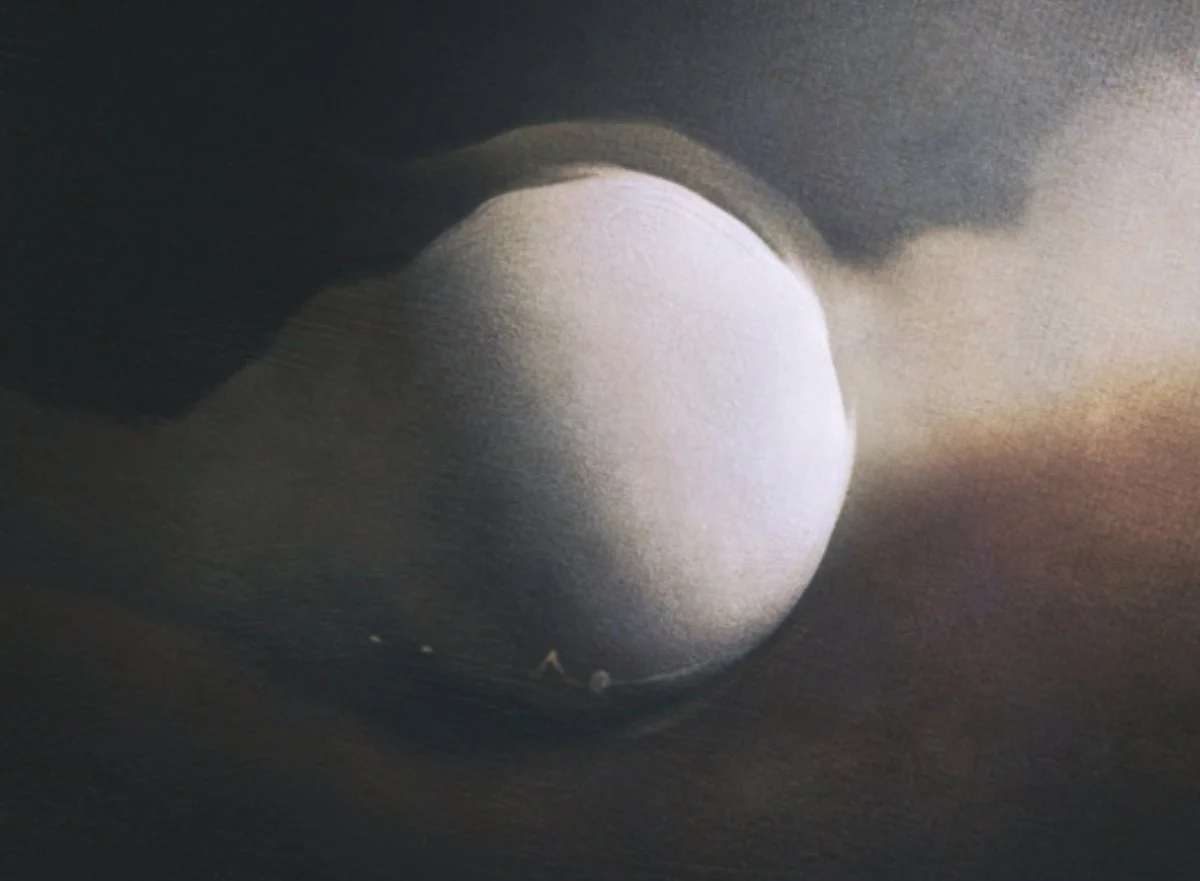The Credo Of Digital Silence
Details from digital work Geometria. 2023.
When it starts, it’s most often with a sphere. And this is not because it means anything, or because it's symbolic. The Blender ecosphere is a basic, round, indifferent shape. Turning on the sculpt mode and the process begins. Stretching the shape, press, subtract, a kind of slow erosion. Digital weathering if you prefer.
Why I like sculpt mode tool?
I’m not really sure… Maybe it’s because I don’t begin with the idea or a goal. There is something in a form itself, and something that has to emerge. Like something buried, asking to be unearthed carefully and then the shapes just show up. I try to respond to that.
The best way to do it, once the sculpting is done, is by this 3D rotation feature. That’s the part that usually takes time. It’s about moving the perspective. Recalibrating, reframing, moving again. Just waiting for the form to answer. It’s not about aesthetic or even composition. It’s rather a moment where the object becomes silent, where it doesn’t try to speak. The final frame should appear as a kind of shape that has forgotten its function. And in doing so, has become free.
Today’s world is full of noise anyway. It’s always the movement, vibrancy, a performance, a glow. But I’m more interested in what happens when that insane noise stops. And what does it mean to make something like that? Something that is not frozen or paused but like water that doesn’t move, yet reflects. Can we really make an image like that? I never animate these works or interact with them. I let them sit there fixed in a single angle, caught in the single act of vanishing or forming. And there is something sacred in that refusal. Not religious, but private. A kind of inner quiet that doesn’t ask to be explained.
Borges said:
Any life, however long and complicated it may be, actually consists of a single moment...
I think of art in the same fashion, similar to that very moment. Suddenly stopped, not finished, no longer moving.
Once I have it, or whatever I am intrigued by, I take it into Affinity. That’s where the surface changes again, adding the scars, a reflection for sure. Making the edges softened, or sharpened, where the texture becomes a value without deciding what for. The overpainting process allows me to make the geometry forget itself. Something like an ambiguity, the kind of imperfection that resembles memory. Not as the final recall but as the moment before our brain starts to fill the unknown gaps with our subjectivity, indoctrination, prejudices. I used to darken parts that was too confident and blur what felt too clear. And all this in attempt to make the image become more unsure of itself.
It's a similar to being torn apart between cultures and shaped in a place where history is not a subject, but a shadow. An environment where silence is compression. And everything feels like it carries more than it should. In that kind of environment you learn to speak carefully. Learn to think privately. You learn that solitude is not loneliness but more a sanctuary. Maybe that’s why the plain shows up so often in the work. It’s definitely not a landscape, but a mental structure. Flat, featureless, and unclaimed, where things are stripped of label and purpose. A place where something unnamed might emerge. It’s not a metaphor, it’s a place I return to.
Why most of the time I keep working like this, why not make something clearer? Maybe something brighter or easier?
It's because the clarity really exhausts me. It feels extremely dishonest. Explaining too much too quickly is what world has become already. And maybe I care to make images that wait, that don’t perform, don’t resolve. Is that too indulgent? I don’t know… I just enjoy in moments of waiting for the images to stop hiding.
On a personal level, I’m not interested in being visible in the work. The work isn’t about me. It’s rather about everything else, about the condition of forming something that refuses to entertain. It’s not that I reject identity—I just don’t like to perform it. That would be too vulgar for my taste. It’s a dangerous territory where one could easily get lost, becoming an unconscious part of the consumerism at both ends. I’d rather let the silence hold the tension and let the plain remain undivided.
Kiš wrote:
We are all contaminated by the ideologies of our time. The only hope is awareness—and resistance.
That resistance doesn’t have to be loud and bold. Sometimes, it’s the refusal to mythologize, to brand or claim. Silence.
I’d love to think of the final image as a kind of soft but unease hesitation. Because there is no closure or attempt to make one. Sometimes I think of the studio desk as a plain too. A psychological one, flat, vast and unclaimed. And every image as a structure left to decay, not to explain itself. But to mark that someone or something passed through…
author lvan Bjørn


